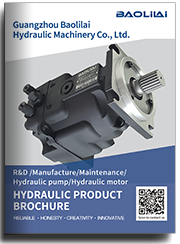90R075KA1CD80R4S1E09GBA383824 piston pump
90R075KA1CD80R4S1E09GBA383824 piston pump

- Product Details
- Applicable Scene
Hydraulic pumps play a critical role in the food and beverage manufacturing industry, facilitating processes such as bottling, packaging, and equipment operation. Their efficiency directly impacts production speed, product quality, and overall operational costs. Therefore, proper maintenance of hydraulic pumps is essential to ensure they perform effectively and reliably.
90-R-075-KA-1-CD-80-R-4-S1-E-09-GBA-38-38-24
90R075KA1CD80R4S1E09GBA383824
The first step in maintaining hydraulic pumps is to establish a routine inspection schedule. Regular checks can help identify potential issues before they escalate into major problems. During these inspections, it is crucial to examine components such as hoses, seals, and fittings for signs of wear or leakage. Additionally, monitoring fluid levels is vital, as low hydraulic fluid can lead to overheating and pump failure.

83018520
Another important aspect of pump maintenance is ensuring the hydraulic fluid remains clean and free from contaminants. Contaminated fluid can lead to significant wear and tear on the pump components, ultimately reducing its lifespan. Implementing filtration systems and conducting regular fluid analysis can help maintain the integrity of the hydraulic system.
Furthermore, operators should be trained to recognize the signs of pump malfunction. Unusual noises, vibrations, or decreased performance can indicate underlying issues that require immediate attention. Promptly addressing these symptoms can prevent further damage and expensive repairs.
Lubrication is also a key factor in the maintenance of hydraulic pumps. Regularly lubricating moving parts reduces friction and minimizes wear, enhancing the efficiency of the pump. It is important to follow the manufacturer’s guidelines for lubrication intervals and types of lubricants to use.
Seasonal maintenance checks can also be beneficial, particularly in regions where temperature fluctuations can impact hydraulic fluid viscosity. Ensuring the hydraulic system is equipped to handle temperature changes can prevent performance issues and maintain safety standards.
Finally, keeping accurate maintenance records is essential for understanding the pump’s history and performance. Documentation of inspections, repairs, and fluid changes can help identify patterns and potential areas for improvement. This data can be instrumental in making informed decisions about future upgrades or replacements.





